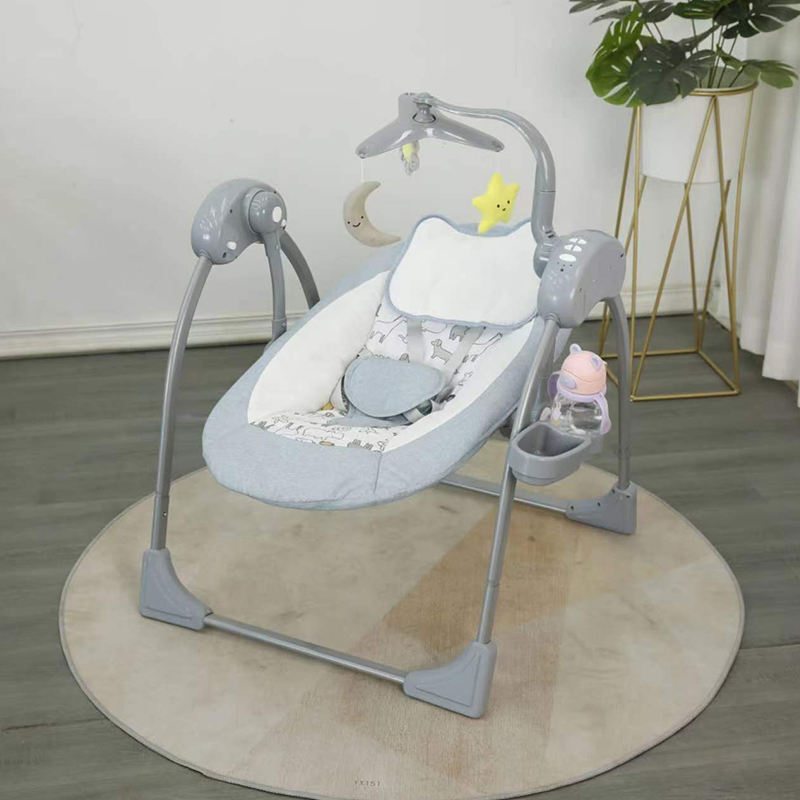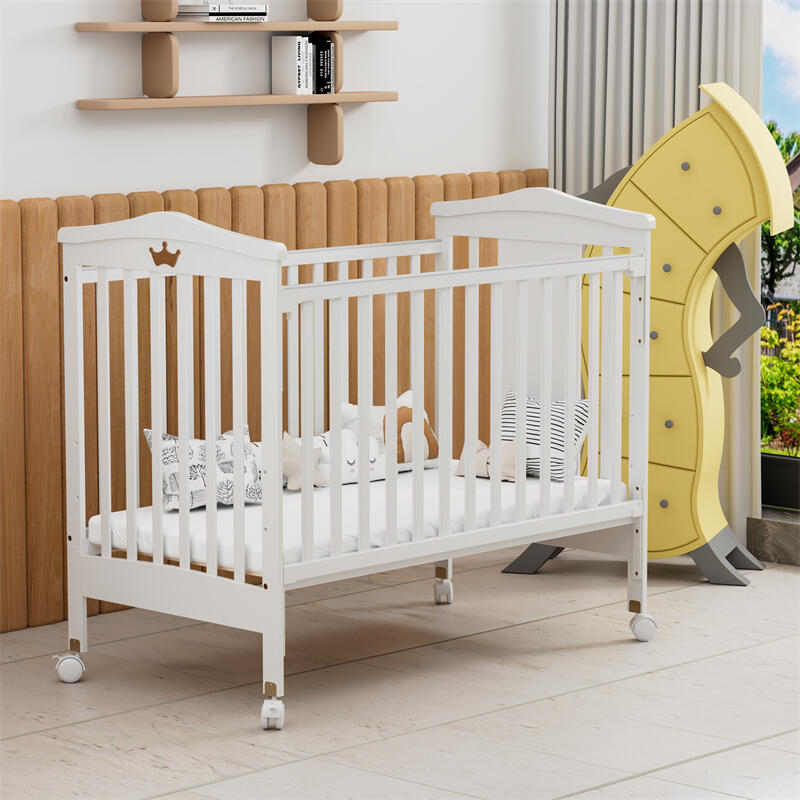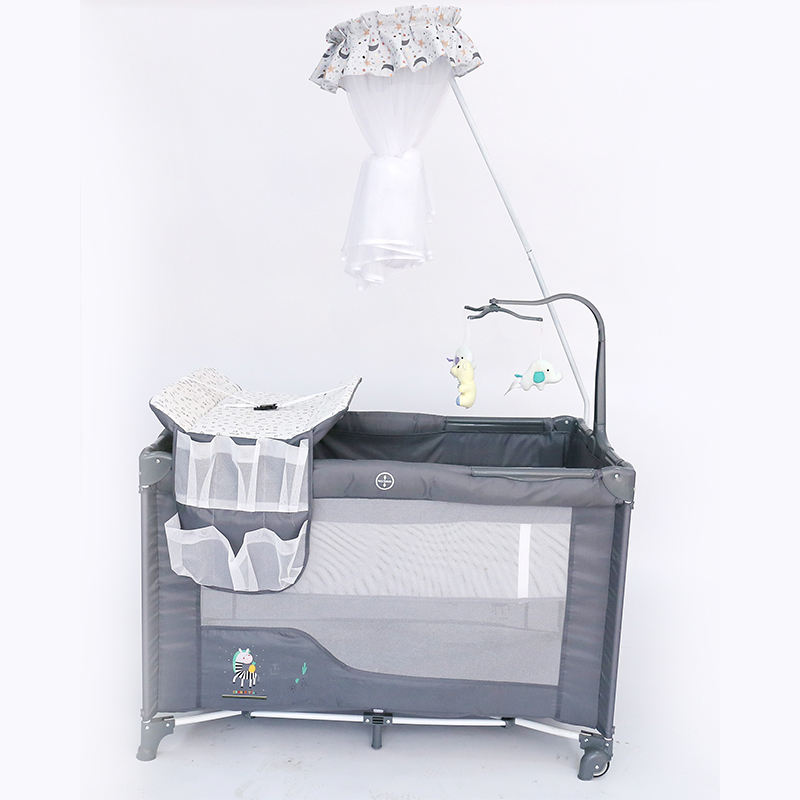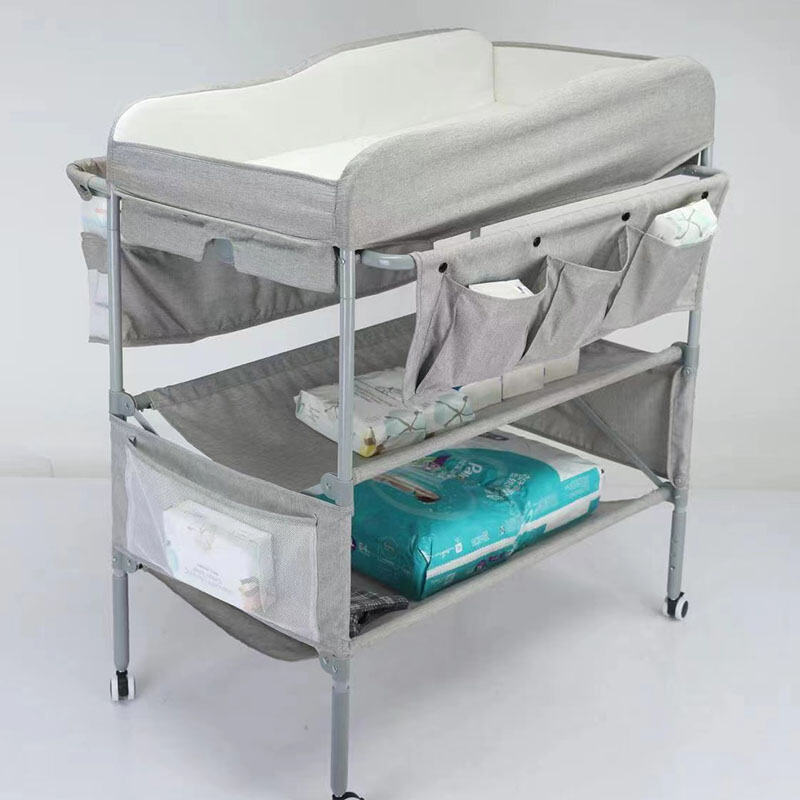Most infants grow at an astonishing pace—often doubling their birth weight by around 5 months and tripling it by their first birthday, according to the World Health Organization’s growth standards. A baby’s rapid growth means that a product suitable last month might quietly become unsafe this month.
Baby bouncers are marketed as soothing, hands-free helpers that let babies lounge, nap, or gently rock. But while they’re beloved for their convenience, their structural safety hinges on a strict weight limit—one that many parents either overlook or misinterpret.
According to the American Academy of Pediatrics (AAP), all baby equipment—especially inclined seating—must be used within age, weight, and developmental limits.
Yet, many parents assume a few extra pounds won’t hurt—or worse, don’t realize their baby has surpassed the limit. Unlike clothing sizes, there’s no visual cue when a bouncer becomes unsafe. The transition happens silently, often between diaper changes and growth spurts.
What Happens If Your Baby Exceeds the Weight Limit?
Manufacturers don’t set weight limits arbitrarily—when a baby exceeds these limits, the risks multiply in ways parents might not anticipate.
Tipping or Collapsing
The bouncer’s frame, designed to flex and support up to a specific weight, becomes stressed beyond its intended capacity. This can lead to structural failures. A bouncer designed for babies under 25 pounds, for instance, may become dangerously top-heavy when used by a larger or more mobile child.
A heavier baby shifts the product’s center of gravity, increasing the chances of it flipping over—especially if the baby leans forward, twists to the side, or attempts to sit up independently.
Structural Deformation
Under daily or frequent use, its compressive strength will decrease by about 0.7% per day. Repeated use beyond the weight limit can weaken the product’s structural integrity, even if it doesn’t break outright. Screws, hinges, or flexible bases may loosen over time, creating instability or sudden failure when you least expect it.
Movement Trajectory Out of Control
Uncontrolled motion is particularly dangerous in electric baby bouncers. When working normally, the motor will control the swing amplitude within ±15°. But when the load exceeds the design value of the bouncer, the system may produce violent shaking of more than ±25° due to insufficient torque. Simulation data from Fisher Laboratory shows that the probability of the baby’s head hitting the frame in this case increases by 5 times.
Seat Belt Failure
The risk of seat belt failure is often underestimated. Dr. Emma Reynolds, a pediatric biomechanics expert, pointed out: “When the baby’s weight exceeds 9 kg, the pressure of the standard shoulder strap on the clavicle will increase by 3 times.” This may cause the shoulder strap webbing to tear or the buckle to pop open, especially when the baby suddenly twists and loses the restraint of the seat belt, and the baby may rush out at any time.
What Affects a Baby Bouncer’s Weight Limit?

The load-bearing capacity of a baby bouncer is not a simple numbers game, but a precise balance between engineering design and safety standards.
According to the test requirements of ASTM International Standard F2167-22, all qualified products must be able to withstand pressure twice the nominal weight. However, in actual use, the load-bearing performance will be affected by four key factors.
Frame Material
The frame material directly determines the basic support. The mainstream products on the market are divided into two categories: plastic brackets and metal frames. Plastic brackets are common in lightweight bouncers and have a lower load-bearing capacity. Some high-end models use metal brackets such as aluminum alloys, which can support higher weights.
It is worth noting that the thickness of the material is more important than the type – the load-bearing capacity of 1.2mm steel pipe is about 40% higher than that of 0.8mm.
Seat Belt System
A well-structured seat with a seat belt will evenly distribute the baby’s weight on the baby bouncer, preventing the weight from being concentrated on a single point.
The mechanical design of the seat belt system directly affects the payload. According to laboratory comparative tests, the five-point seat belt can carry 15% more weight than the traditional three-point seat belt by dispersing pressure. However, this also means a more complex adjustment mechanism, and parents need to regularly check whether the buckle is aging.
Base Width
The base width of the baby bouncer is often overlooked by consumers, but it is the core element of anti-rollover. For every 5cm increase in the base, the stability increases by 30%. This is why the oval base can support higher weight, while similar narrow base products have a lower weight limit.
Baby’s Age, Mobility, and Motor Development
A baby approaching the upper weight limit may also be reaching key milestones like rolling over, sitting up, or attempting to lean forward. These motor changes increase movement force and unpredictability—meaning the product needs to do more than just hold weight; it must also stay stable under active, shifting loads. That’s why many manufacturers advise discontinuing use even before the weight limit is reached if the baby shows signs of outgrowing the product developmentally.
What Is the Average Weight Limit for Baby Bouncers?
Most baby bouncers on the market have a weight limit between 20 and 30 pounds. Compact or travel-friendly models often max out closer to 20–25 pounds, while more robust, high-end options with reinforced frames may support up to 30 or even 35 pounds. These design thresholds are closely aligned with typical infant growth patterns.
During the neonatal stage (0–3 months), most babies weigh between 3 and 6 kilograms, making nearly all bouncer models suitable and safe to use.
As babies enter the rapid growth phase (4–6 months), their weight can increase to 7–9 kilograms, which begins to approach the upper limit of lighter-weight bouncers.
By the time a baby reaches 7 months or more, and their weight exceeds 9 kilograms, about 60% of baby bouncers are no longer appropriate.
Manual vs. Motorized Bouncers
Not all bouncers are built the same. The type of bouncer—whether a basic manual model or a motorized one—affects its weight capacity.
Manual bouncers typically support a higher weight range—often up to 25 or 30 pounds—since they rely on the baby’s natural movement and require minimal mechanical support.
Motorized bouncers, which include features like vibration, music, swaying, or automatic bouncing, often come with lower weight limits, usually between 18 and 25 pounds. This is because the additional mechanics and motion systems are calibrated for smaller babies and may not safely handle the momentum of heavier infants.
Comparative Analysis of Weight Limits of Mainstream Brands
| Brand/Model | Maximum Load-Bearing | Applicable age | Safety Design Highlights |
| 4moms MamaRoo | 11.3kg | 0-6 months | Dynamic center of gravity calibration technology |
| BabyBjörn Balance | 11kg | 0-12 months | Patented spring cushioning system |
| Fisher-Price Soothe | 9kg | 0-9 months | Weight warning smart reminder |
| Clafbebe | 10kg | 0-7 months | Extra wide oval base |
The weight limit value is usually marked on the label at the bottom of the seat or on the front page of the instruction manual. Some brands will additionally print warning signs on the seat belt buckles.
5 Practical Tips for Parents
1. It is recommended to choose a model with a nominal weight limit of more than 3 kg more than the baby’s current weight. For example, an 8 kg baby should choose an 11 kg+ model.
2. The joints of the metal frame must have reinforced welding points, and the thickness of the plastic parts should be ≥ 2.5mm (can be easily measured with the edge of a coin).
3. When the baby starts to kick his legs frequently, the actual load-bearing requirement will increase by 40%~60% compared to the static weight.
4. When buying a second-hand baby bouncer, ask the seller to provide a video of the actual measurement of the weight scale: put an object of known weight (such as a 5 L bottle of water) into the seat and observe whether the bracket is deformed.
5. When wearing heavy clothes in winter, the baby’s effective weight will increase by 0.8~1.5 kg. It is recommended to take off the coat before using the baby bouncer.
Are Baby Bouncer and Swing Weight Limits Different?
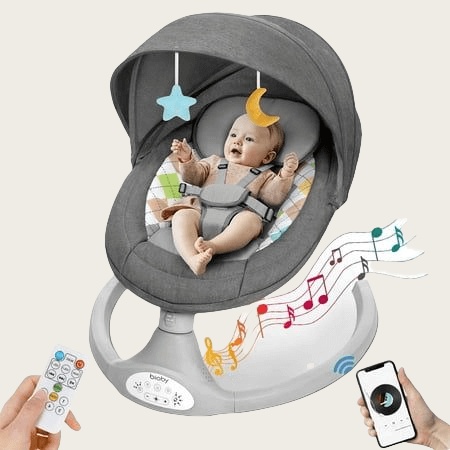
Yes—baby swings tend to have a higher weight capacity than baby bouncers, and that difference reflects not only how they’re built, but also how they’re used.
Baby swings are built with sturdier frames and broader bases to maintain stability during their characteristic pendulum motion. Moreover, baby swings use reinforced metal brackets and stronger motors to carry higher weights.
In contrast, baby bouncers are usually driven by manual or weak motors, and their lightweight frame design results in a relatively low average weight limit. Without the need to sustain repetitive mechanical motion, bouncers can utilize lighter materials—but this also means they reach their safe weight capacity sooner than swings.
The EU EN 12790 standard has clear regulations on this. Bouncers must pass a 20,000 swing test, while swings must pass a 50,000 test and can bear 30% more weight. Here is a comparison:
| Dimensions | Baby Bouncer | Baby Swing |
| Typical Weight Limits | 20–30 lbs | 25–35 lbs |
| Applicable Age | Newborn to 6 months | Newborn to 9 months |
| Movement Type | Gentle bounce or rocking | Swings back and forth or side to side |
| Usage Scenarios | Soothe your baby for a short time (recommended ≤30 minutes per session) | Long-term use (some models support 2 hours of continuous operation) |
Are There Bouncers for Bigger or Older Babies?
Some manufacturers offer bouncers with extended weight limits or reclining seat positions that grow with the child. That said, products with genuinely high weight capacities remain rare, and parents searching for them often find themselves with few practical options.
The real reason is simple: once babies reach a certain stage—whether in terms of weight, muscle strength, or mobility—their needs change. Traditional bouncers are designed for soothing relatively still, non-sitting infants. Older babies, on the other hand, begin to move with intention: they twist, roll, kick harder, and try to sit up or lean forward.
That’s why, rather than searching for oversized bouncers, it often makes more sense to transition to products better suited for growing, more active babies. Here are some references:
Enhanced Electric Swings: Enhanced electric swings provide a familiar rocking motion while supporting weights up to 30-35 pounds. Some premium swings come with multi-speed settings and reinforced frames designed for babies nearing toddlerhood.
Fixed Support Seat: For babies who crave support while sitting but don’t need motion, a fixed support seat may be a better fit. They’re especially useful during the early sitting stage, when a baby needs assistance maintaining balance.
Adjustable Baby Push Walker: If your baby is already trying to push up or explore, an adjustable baby push walker may be worth considering. While not a substitute for a bouncer, it gives babies a chance to engage their growing leg strength and practice controlled movement under supervision.
Open Floor Activity System: Open floor activity systems provide contained play spaces that allow bouncing and spinning motions without the constraints of traditional bouncers, often supporting weights similar to standard models but with greater developmental appropriateness.
Convertible Activity Stations: Perhaps the most versatile solution comes in convertible activity stations. These innovative products begin as infant bouncers for the first six months, then transform into stationary activity centers by locking the bounce mechanism and adjusting the seat height.
Common Misunderstandings and Expert Opinions
Misunderstanding 1: A Temporary Overload Won’t Cause Harm
Even if the material is overloaded for a short period, it will cause irreversible plastic deformation. These failures don’t always happen immediately—but the risk of tipping, collapsing, or restraint breakage increases significantly once the product is used outside of its tested range.
Misunderstanding 2: Second-Hand Baby Bouncers Are a Budget-Friendly Solution
The actual load-bearing capacity of equipment used for more than 18 months may decrease by 20%-35%.
More critically, some second-hand models may not comply with current safety standards, especially if they were manufactured before major updates in regulations (such as ASTM F2167 revisions or the CPSC’s newer infant inclined product rules).
Misunderstanding 3: The More Features, the Safer the Bouncer
In fact, for each additional electronic function (such as Bluetooth connection), the complexity of the device structure increases by 18%, which can introduce more points of failure. Added motors, electronics, and detachable parts also tend to reduce stability and can make maintenance more difficult over time.
Expert Parenting Advice
Child development experts emphasize that active exercise should be given priority to infants. Ensure at least 120 minutes of free floor time every day to promote natural musculoskeletal development and reduce dependence on load-bearing equipment
In addition, any support equipment should not be used continuously for more than 45 minutes, and body position adjustment and stretching exercises should be performed during the intervals.
Conclusion
In the journey of parenting, the baby bouncer is not only a soothing tool but also a concrete carrier of safety responsibility.
As parents, we can not only measure the weight and check the product parameters regularly but also establish a keen sense of safety. When the baby starts to try to roll over, when the growth curve exceeds the standard value, or when the equipment makes a slight abnormal sound, these are warning signals that require immediate action.
Recommended Related Articles:

